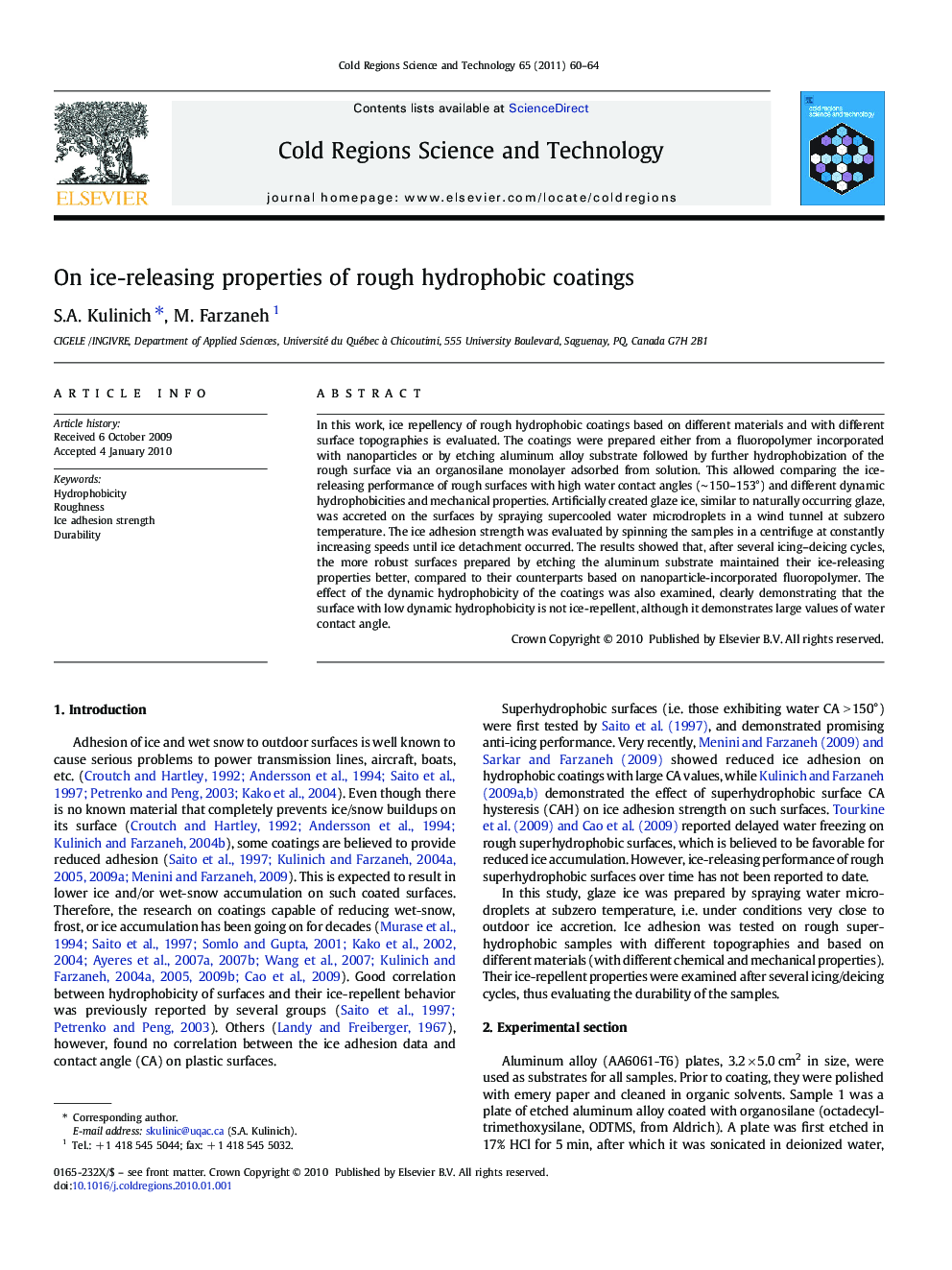| Article ID | Journal | Published Year | Pages | File Type |
|---|---|---|---|---|
| 4676086 | Cold Regions Science and Technology | 2011 | 5 Pages |
In this work, ice repellency of rough hydrophobic coatings based on different materials and with different surface topographies is evaluated. The coatings were prepared either from a fluoropolymer incorporated with nanoparticles or by etching aluminum alloy substrate followed by further hydrophobization of the rough surface via an organosilane monolayer adsorbed from solution. This allowed comparing the ice-releasing performance of rough surfaces with high water contact angles (∼ 150–153°) and different dynamic hydrophobicities and mechanical properties. Artificially created glaze ice, similar to naturally occurring glaze, was accreted on the surfaces by spraying supercooled water microdroplets in a wind tunnel at subzero temperature. The ice adhesion strength was evaluated by spinning the samples in a centrifuge at constantly increasing speeds until ice detachment occurred. The results showed that, after several icing–deicing cycles, the more robust surfaces prepared by etching the aluminum substrate maintained their ice-releasing properties better, compared to their counterparts based on nanoparticle-incorporated fluoropolymer. The effect of the dynamic hydrophobicity of the coatings was also examined, clearly demonstrating that the surface with low dynamic hydrophobicity is not ice-repellent, although it demonstrates large values of water contact angle.
